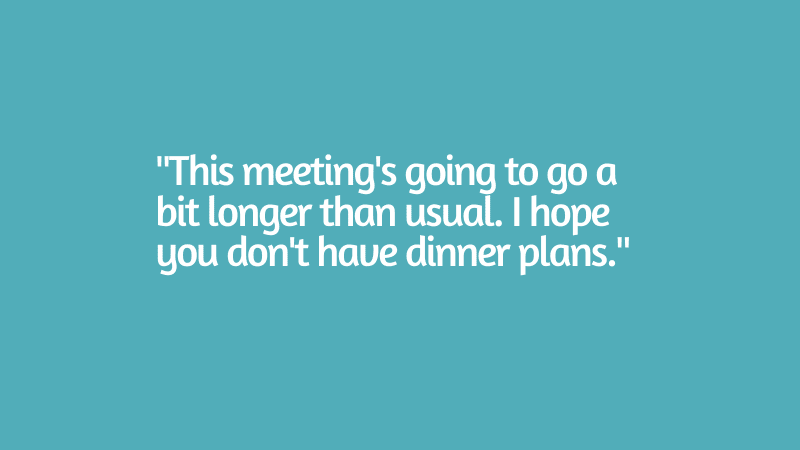You know those times you need to suggest that people shouldn’t reheat last night’s fish dinner in the staff room microwave? The same is true for staff meeting behavior. Some people may not feel they’re doing anything wrong, because we all have different tolerance levels when it comes to actions and behavior. What doesn’t bother you might distract someone else.
Meetings need rules, but announcing them can feel authoritarian. Here’s how to set norms for respectful school staff meetings, so that everyone feels heard:
1. Call them something other than ground rules.
The word “rules” automatically makes many people bristle and the goal is to appeal to everyone on your team. Here are some alternatives to Ground Rules:
- Meeting Manifesto
- Code of Conduct
- Meeting Guidelines
- Meeting Protocol
2. Set the staff meeting tone as one of respect.
Use the word respect in everything you do.
- Respect our commitment to make meetings productive.
- Respect everyone’s schedule by starting and ending on time.
- Respect the work of the meeting by coming prepared and sticking to the purpose.
- Respect each other as human beings by asking for clarification and not making assumptions.
- Respect yourself by behaving in a way you’ll be proud of when you leave the meeting.
[contextly_auto_sidebar]
3. Bring all stakeholders into the process.
Decisions that affect everyone at your school should involve everyone in your school. Send out a simple anonymous poll and ask staff to prioritize those factors that adversely affect staff meetings the most. This can give you much-needed information before you establish those ground rules. Here are some of the factors you might want to include in your poll:
- Not showing up to a meeting
- Showing up late or leaving early
- Dominating the conversation
- Side conversations
- Being given information that could have been addressed in an email
- Technology distractions
- Lack of contributions
- Not paying attention
Once you’ve gathered your poll results, bring the information to the meeting. Show your staff you hear them. Ask teachers to help create protocols that address the high priority items.
4. Bring two possible solutions for every one complaint.
It’s a waste of time to come to a meeting filled with complaints, but that’s what many people do. To make sure every meeting doesn’t go down the rabbit hole of negativity, welcome complaints, but let people know they must be followed with two possible solutions for your team to evaluate. This elevates every discussion because no one is mired in feeling like a victim.
5. Focus on student needs.
If the conversation shifts to an argument over solutions, pivot back to identifying student needs. What needs must be met in order to solve the problem? A school’s focus should always be on the needs of the students and that often clarifies the next steps. Even treatment of teachers’ needs is ultimately about student needs. Teachers who are over-tired or unfocused can’t be there for students.
6. Discuss the elephant in the room.
Finally, make sure that your staff sees meetings as a place to discuss the undiscussable. When the status quo becomes putting your thoughts out there, people feel more empowered. Being transparent, even if you have to say you don’t know the answer, helps everyone build trust in where they work and the people they work with.
Once you’ve established ground rules and agreed to them, use those rules to help bring everyone back to center regularly. For example, “We’ve agreed to let one person speak at a time, I’m not sure Hannah was finished with her point.” This reminds people of the rules and keeps the meeting in a zone of respect.
Have you had an experience with ground rules that could benefit others and help set the tone for respectful school staff meetings? Come and share in our Principal Life group on Facebook.
Plus, Let’s Face It, Many of Your Staff Meetings Could Probably Be Handled With an Email.


